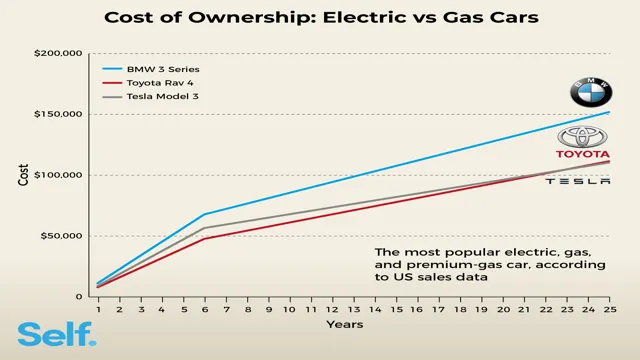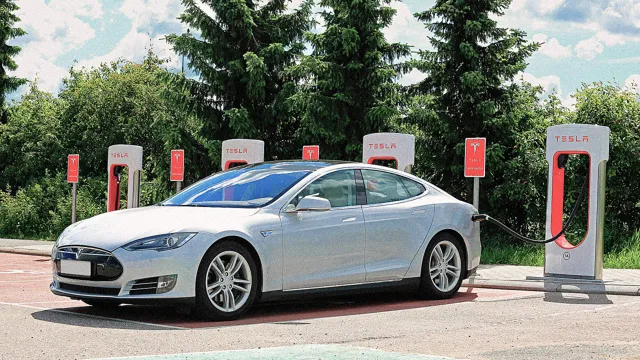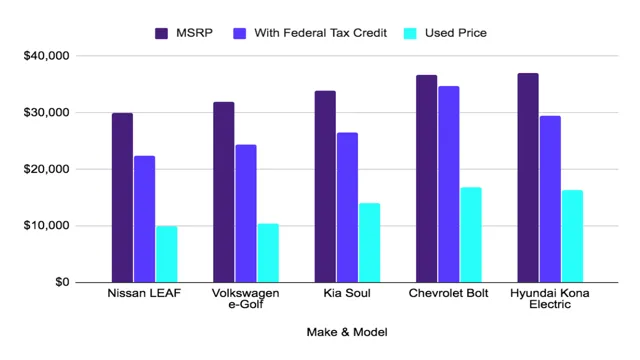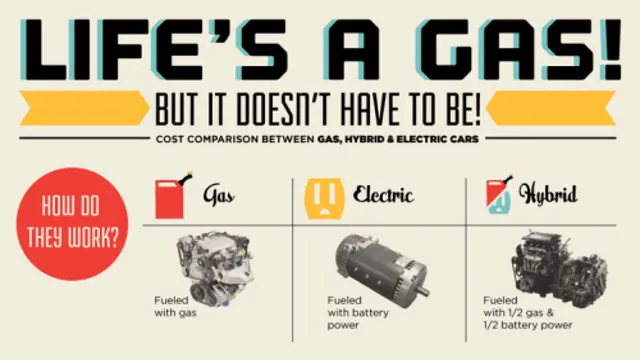Electric Car Maintenance Woes: Tackling the Top Challenges Head-On
Electric cars may seem like a dream come true for environmentally conscious individuals who are concerned about the carbon footprint they leave behind. They promise zero emissions, much lower running costs, smoother rides, and a high-tech driving experience. However, maintaining an electric car can be a bit tricky, especially for those who are new to the technology.
Although electric vehicles have fewer mechanical components than conventional cars, they are not immune to problems and issues. From battery degradation to software errors, there are several things that electric car owners need to be aware of to keep their vehicles in top-notch condition. In this article, we will discuss some of the main issues that arise when maintaining an electric car and what you can do to address them.
Battery Life
Maintaining an electric car can be challenging, and one of the biggest issues is battery life. While electric vehicles can travel several hundred miles on a single charge, the battery’s performance can degrade over time. Factors such as high or low temperatures, frequent rapid charging, and extended periods of disuse can all contribute to reduced battery capacity.
To help maintain optimal battery health, it’s essential to follow manufacturer’s guidelines for charging and to avoid exposing the vehicle to extreme temperatures. Regular battery checks and maintenance can also help extend the battery’s lifespan. While electric vehicle owners may face battery-related issues, advances in battery technology are continuously improving, making electric vehicles more durable and reliable in the long term.
Battery degradation and replacement costs
When it comes to electric cars, one of the biggest concerns for drivers is battery life and replacement costs. While electric car batteries can last for several years, they can degrade over time, causing a decrease in range and overall performance. This happens due to a combination of factors, including usage patterns, temperature, and charging practices.
However, the good news is that most electric car batteries come with warranties that cover them for a certain number of years or miles, giving drivers peace of mind. Additionally, as technology advances, the cost of replacing a battery pack has decreased significantly in recent years, allowing more people to enjoy the benefits of electric vehicles. So, while the issue of battery degradation and replacement costs may seem daunting, it’s important to keep in mind that electric cars are still a viable option for those looking for a more sustainable way to get around.
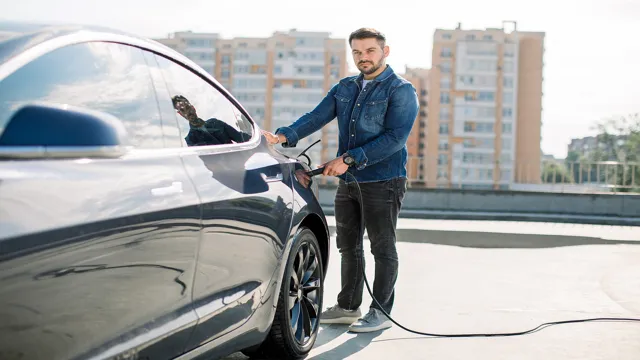
Charging infrastructure and accessibility
Battery life is an essential factor to consider when it comes to charging infrastructure and accessibility of electric vehicles. A car’s battery life signifies how long it will run on a single charge and how often the driver has to recharge. Nowadays, car manufacturers are producing electric vehicles with batteries that can last up to 400 miles on a single charge.
However, some factors can significantly affect the battery’s lifespan, such as weather conditions, driving style, and age of the battery. Drivers need to understand how these factors can affect their car’s battery life and adjust their driving and charging habits accordingly. It’s important to note that the better the car’s battery life, the more accessible it is to the driver, as one won’t have to worry about recharging frequently.
In short, a robust battery life means more accessibility to electric vehicles, and it’s essential to get the most out of this feature for a better driving experience.
Limited Range
One of the biggest issues with maintaining an electric car is its limited range. While advancements in electric vehicle technology have improved the range over the years, it is still far less than that of a traditional gasoline-powered vehicle. This means that drivers need to carefully plan their routes and make sure they have access to charging stations along the way.
Additionally, cold weather can also significantly impact the range of an electric car, as the battery is less efficient in colder temperatures. It’s important for drivers to understand these limitations and plan accordingly, as well as factor in any potential detours or unexpected stops that could drain the battery even further. While the limited range can be a challenge, it’s important to remember that electric cars are still a viable and environmentally-friendly option for many drivers.
Finding charging stations on longer trips
When you’re driving an electric vehicle (EV), you need to be mindful of the limited range. This can be a bit tricky when you’re taking longer road trips that extend beyond the range of a single charge. One solution is to plan your route ahead of time, so you know where charging stations are along the way.
Many EV manufacturers offer apps and websites that can help you find charging stations, but there are also third-party apps that can provide more comprehensive information. While planning your route, make sure to factor in charging time, as it can take anywhere from 30 minutes to several hours to fully charge your vehicle. With a little bit of forethought, you can enjoy the benefits of EVs without worrying about range anxiety.
Planning routes to avoid running out of charge
Limited Range One of the biggest concerns for electric vehicle (EV) drivers is running out of charge before reaching their destination. This is due to the limited range of most EVs and the fact that charging stations are not yet as common as gas stations. However, with proper planning and awareness, you can avoid running into this problem.
The first step is to know the range of your vehicle and plan your route accordingly. Consider the distance you need to travel and whether there are any charging stations or power outlets along the way. Don’t forget to factor in weather conditions, as extreme temperatures can affect your battery life.
It’s also a good idea to familiarize yourself with your vehicle’s charging time and know how long it will take to recharge your battery. When driving, keep an eye on your battery level to ensure you stay within your range, and don’t be afraid to adjust your route or make stops as needed. With careful planning and a little bit of patience, you can avoid running out of charge and enjoy all the benefits of driving an EV.
High Investment Cost
One of the most significant issues with maintaining an electric car is the high investment cost. While electric cars are known for being more environmentally friendly and energy-efficient, they come with a hefty price tag. The initial purchase cost of an electric vehicle is much higher than that of a traditional gas-powered car.
Additionally, the cost of replacing electric car batteries, which are the most crucial component of the vehicle, can be extraordinarily expensive. The high cost of maintenance and repair is further exacerbated by the limited availability of specialized mechanics and repair shops for electric cars. It is crucial to consider these financial factors before investing in an electric vehicle to ensure that you are prepared for the added expenses.
However, over the long term, the lower cost of electricity compared to gasoline and the lack of oil changes and other engine maintenance expenses can make up for the initial investment cost.
Initial purchase price higher than gas-powered cars
When considering the purchase of an electric car, one factor that often comes to mind is the initial investment cost. It’s no secret that electric vehicles tend to have a higher price tag than their gas-powered counterparts. However, it’s essential to look beyond the initial purchase price and consider the long-term benefits.
While the up-front investment may be higher, electric cars have lower operating costs and require less maintenance over time. Plus, there are often tax credits and other incentives available that can help offset the initial purchase price. It’s important to weigh all of the factors and consider the long-term savings when making the decision to purchase an electric vehicle.
In the end, the investment may be well worth it for both your wallet and the environment.
Requirement for specialized maintenance and repairs
Investing in specialized equipment is a high-stakes decision that requires careful consideration of several factors, one of which is the high investment cost. Unlike general maintenance tools, specialized equipment is often custom-made to meet specific needs, and this customization can significantly increase the purchase price. However, investing in specialized equipment can ultimately save time and money in the long run, as it enables you to maintain equipment more efficiently and effectively.
On the other hand, using general maintenance tools for specialized needs can result in decreased productivity and even damage to your equipment. So yes, investing in specialized equipment can be costly, but it is essential to ensure your facility runs smoothly and efficiently.
Weather Factors
When it comes to maintaining an electric car, one of the biggest issues is weather factors. Extreme temperatures, both hot and cold, can greatly affect the performance and lifespan of an electric car’s battery. In cold weather, the battery’s range may be reduced, and it may take longer to charge.
On the other hand, in hot weather, the battery can degrade faster and lose capacity over time. Additionally, heavy rain or flooding can pose a risk to the car’s electrical components, so it’s important to take precautions and avoid driving through flooded areas. While electric cars are becoming more common and accessible, it’s important to keep in mind the impact of weather on their maintenance and longevity.
By taking care of the battery and protecting the car from harsh weather conditions, you can ensure that your electric car remains reliable and efficient for years to come.
Reduced range in extreme temperatures
Extreme temperatures can have a significant impact on the range of your electric car. This is due to several weather factors such as cold weather, hot weather, and even strong winds. In cold weather, the reduced range is caused by the battery’s internal resistance increasing, making it more difficult to charge and discharge energy.
On the other hand, in hot weather, the reduced range is due to air conditioning, which requires additional energy from the car’s battery. Additionally, strong winds can also affect your range by creating air resistance, which requires more energy to move your car. Therefore, it is essential to consider the effects of weather factors when planning a trip or daily commute with your electric car to ensure you have enough range to reach your destination without any issues.
By checking weather forecasts, you can estimate the range of your electric car and plan accordingly to avoid any surprises on the road.
Maintenance challenges in harsh weather conditions
When it comes to maintenance challenges, harsh weather conditions can pose a serious threat. Extreme weather factors such as heavy rain, snow, high winds, and extreme temperatures can make maintenance operations difficult for any person or machinery. For instance, heavy rain can cause flooding, soil erosion, and landslides, making it hard for maintenance workers to access specific areas.
Freezing temperatures can also lead to broken water and sewer lines, which can take days or even weeks to repair. Strong winds can damage roofs, windows, and other structures, while lightning can cause power outages and equipment damage. Therefore, it’s essential to plan ahead and take preventive measures to ensure that your property remains safe in harsh weather conditions.
Adequate maintenance should be carried out before, during and after weather events to avoid costly repairs.
Conclusion
While electric cars provide a cleaner and more sustainable option for transportation, there are still a few issues with maintaining one. From finding charging stations to replacing expensive batteries, owning an electric car requires some extra planning and investment. But fear not, with advancements in technology and infrastructure, these issues are slowly being tackled.
So, if you’re ready to make the switch, just remember to pack your charging cable and get ready for a jolt of electrifying adventure.”
FAQs
What is the main challenge in maintaining an electric car?
One of the main challenges in maintaining an electric car is ensuring that its battery is properly cared for and regularly charged, as neglecting the battery can reduce its lifespan.
Are electric cars more expensive to maintain than traditional gasoline cars?
On average, electric cars tend to require less maintenance than their gasoline counterparts, as they have fewer moving parts and fewer fluids that need to be changed regularly.
Can electric car owners perform their own maintenance?
While some basic maintenance tasks like tire rotations and brake pad replacements can be done by electric car owners themselves, the high voltage electrical systems in electric cars should always be serviced by professionals.
How often do electric cars need to be serviced?
Electric cars tend to require less frequent maintenance than gasoline-powered cars, but regular inspections and check-ups are still recommended, typically every 10,000-15,000 miles or annually.

